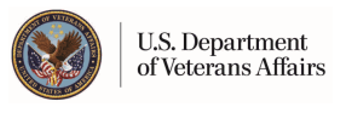Recognizing a Heart Attack
Knowing the signs could save a life
 How fast you respond to a heart attack can make a huge difference in how serious the attack is and how much damage it causes. But it’s not always easy to tell. If you don't know the warning signs of a heart attack, you might ignore the pain. Knowing the signs of a heart attack can help you act fast.
How fast you respond to a heart attack can make a huge difference in how serious the attack is and how much damage it causes. But it’s not always easy to tell. If you don't know the warning signs of a heart attack, you might ignore the pain. Knowing the signs of a heart attack can help you act fast.
What is a heart attack?
About every 40 seconds, someone in America has a heart attack. A heart attack is an urgent message that your heart needs oxygen. The most common cause is coronary artery disease. When a blockage or plaque within a coronary artery ruptures or breaks, a blood clot forms around it. This blood clot can block the oxygen-rich blood from getting to the muscle of your heart. That causes the heart muscle to start dying, and you begin to feel the symptoms of a heart attack. Your doctor may also refer to this as, “acute myocardial infarction."
Learn more about coronary artery disease on the Veterans Health Library website
Are you at risk?
Knowledge is power. Understanding your risks could protect you from a future heart attack. You can't control some risk factors, like age or family history. But there are other risk factors that you can control. Here are some things you can do to lower your risk:
Limit your saturated and trans fats. These are found in foods like margarine, french fries, doughnuts, and other snack foods that have partially hydrogenated oils. Replace these with lots of fruit, vegetables, whole grains, nuts, and lean animal proteins.
Don’t smoke. If you use any kind of commercial tobacco or nicotine, quitting is the single most important thing you can to do improve your health and protect your family’s health. Ask your health care provider about nicotine replacement products and smoking cessation support.
Be active. All adults should avoid inactivity by moving more and being active as much as possible. Any amount of physical activity is better than none. Choose activities that you enjoy and start at a comfortable level. Then, gradually increase your activity with a goal of at least 150 minutes (2 ½ hours) of moderate intensity activity each week.
Reduce stress. Everyone has stress. While some challenge in life is healthy, too much stress can create problems. Chronic stress, intense anger, and other negative emotions have been linked to heart disease. Try these mindfulness practices to manage daily stress.
Other risk factors include high blood pressure, high cholesterol, chronic kidney disease, diabetes, and extra weight. Talk to your health care team about making a plan that will help you lower your chances of a heart attack. With My HealtheVet you can make an appointment or send a secure messages to start the conversation.
Learn more about appointments on VA.gov
Learn more about messages on VA.gov
Know the signs
Some heart attacks are sudden and intense. But some may start slowly with mild pain or discomfort. Paying attention to the warning signs may save your life. If you notice any of these symptoms, don't wait to get help:
Chest pain or pressure
Pain or pressure in other areas of the upper body (arms, back, neck, jaw, or upper abdomen)
Shortness of breath
Breaking out in a cold sweat, nausea, or lightheadedness
Dizziness or blacking out
Palpitations
Note for women: Like men, women commonly have chest pain or discomfort as a heart attack symptom. But women may also have other common symptoms, like shortness of breath, nausea, and vomiting, back pain, or jaw pain. It's important to pay attention to these symptoms. They may be warning signs of a heart attack.
Act fast
If you think you have symptoms of a heart attack, call 911 immediately. Don't try to drive to the hospital. This way, an experienced EMS team can begin treatment and safely transport you to the emergency room. Even if you aren't sure, get checked out. Minutes matter and quick action could save your life.
Sign in to manage your health
In 2025, you'll need to use a Login.gov or ID.me account to sign in to My HealtheVet and other VA tools.
You must be a VA patient to access some parts of your VA health record. If you’re not enrolled in VA health care, you can apply now.
Learn how to apply for VA health care
Please vote in our unscientific poll. All responses are anonymous.
Read more
Eat Wisely (Veterans Health Library)
Using the DASH Plan (Veterans Health Library)
Be Physically Active (National Center for Health Promotion and Disease Prevention)
Updated April 1, 2025



